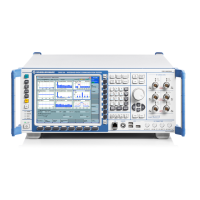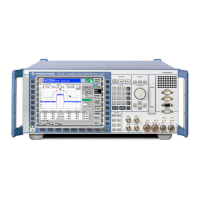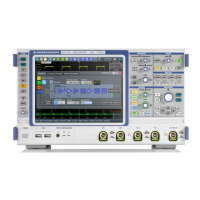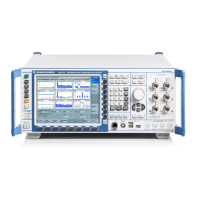Protocol analysisMXO 4 Series
389User Manual 1335.5337.02 ─ 07
5. Tap on "Data" and select the correct channel.
6. Set the CAN "Type", depending on whether you use single-ended or differential
probe:
a) For single-ended probes, connect the probe to either CAN-L or CAN-H. Set the
"Type" accordingly.
b) For differential probes, connect the probe to both CAN-H and CAN-L lines. Set
"Type" = "CAN-H".
7. Set the "Transceiver mode", according to your signal: "SIC mode" or "FAST mode".
8. Set the bit rate for
9. Check that the signals are on the screen.
If not try adjusting the vertical and horizontal settings.
10. Set the logical thresholds:
a) Tap "Threshold setup". The threshold dialog opens.
b) For each wire, set the threshold value.
c) If necessary, set the hysteresis value for the wires.
d) Optionally, tap on "Show threshold lines".
13.5.5.2 Triggering on CAN
Prerequisites: A bus is configured for the CAN signal to be analyzed. See Chap-
ter 13.5.5.1, "Configuring CAN signals", on page 388.
1. Open "Menu" > "Trigger".
2. Set "Trigger on" to "Single event".
3. Ensure that the "Source" is set to the configured serial bus, e.g. "Serial bus 1".
4. Select the "Type".
5. For "Type" = "Frame type":
CAN (option R&S MXO4-K520)

